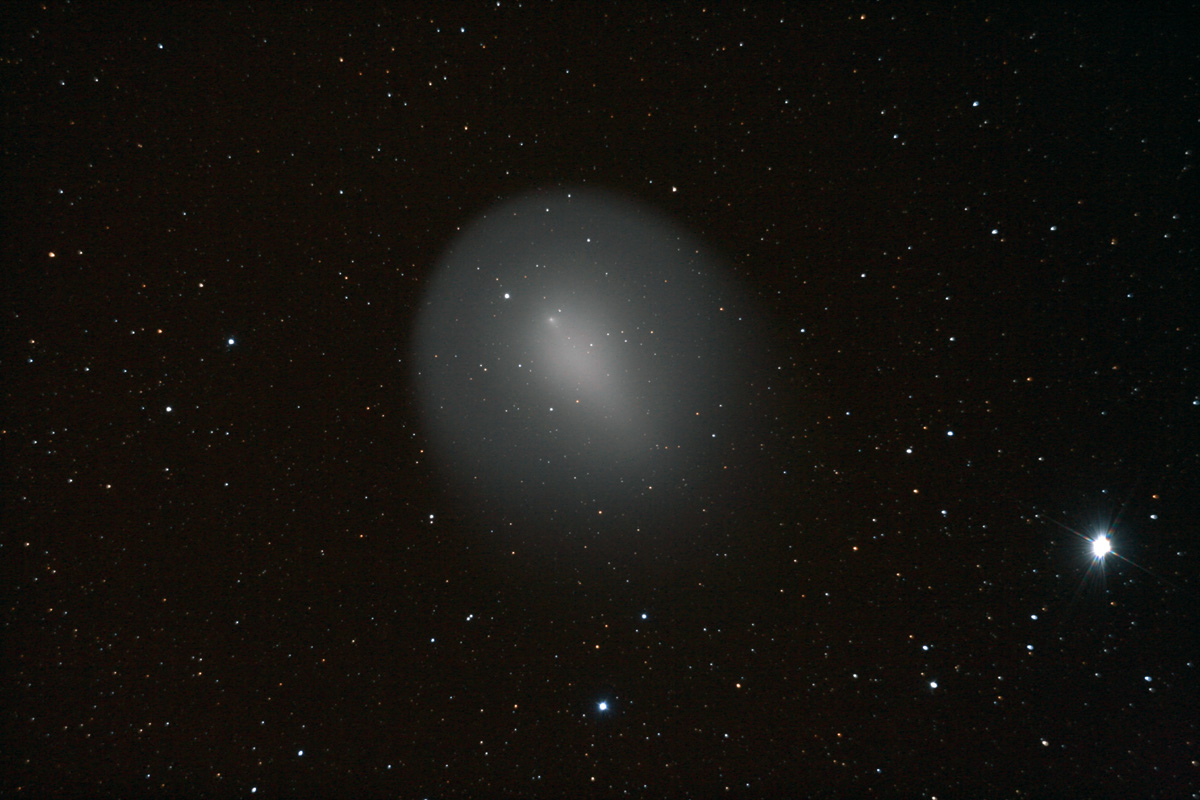In July 2022, the Earth will pass through the dust trail from the flare of comet 17P/Holmes. In October 2007, the ejection from it became the largest such phenomenon ever observed by humans.

Giant ejection from comet 17P/Holmes
This summer, residents of the northern hemisphere will be able to see an hourglass-like cloud in the starry sky. This is the trace of a colossal ejection from comet 17P/Holmes. It took place in October 2007 and became the biggest such event that was observed by people.
At the same time, it should be noted that if we take the size of the comet’s nucleus then it will not be the largest. This title is confidently held by the Bernardinelli-Bernstein object, which follows us from the Oort cloud.
Even more, the coma of the comet, that is, its gas-dust component at that moment became larger than our star. Thus, it turned into the largest object in the Solar System. Scientists believed that this dust would dissipate quickly, but recent studies have shown that it flies around the Sun in an elliptical orbit, passing through the ejection point.
In July 2022, the Earth will just pass by the point where the dust particles of the comet get together and even amateur astronomers will be able to observe this event. However, it will not be possible to see it with the naked eye, but you can enjoy it even with a very powerful telescope.
Why does the Holmes comet flare up
Comet 17P/Holmes orbits the Sun between Mars and Jupiter. In 1892, the English astronomer Edwin Holmes discovered it thanks to a noticeable flash. However, it was nothing compared to what happened in 2007.
The reasons for this behavior of comet Holmes are unknown. It is not unique in that it flares up from time to time. But most comets in orbits close to it do not show such phenomena. Their cause remains unknown.
One of the reasons is the situation when the ice on the comet changes from an amorphous to a crystalline state and an increase in pressure begins, which ends with an outburst. Recent studies of particle physics confirm this opinion.
The next flare of comet Holmes could already be observed in 2014-2015. However, then the conditions of reflection by particles of sunlight changed greatly. Perhaps this year astronomy enthusiasts will be more lucky. It will be possible to observe it from the end of July in the constellation Pegasus.
According to www.space.com
Follow us on Twitter to get the most interesting space news in time
https://twitter.com/ust_magazine
